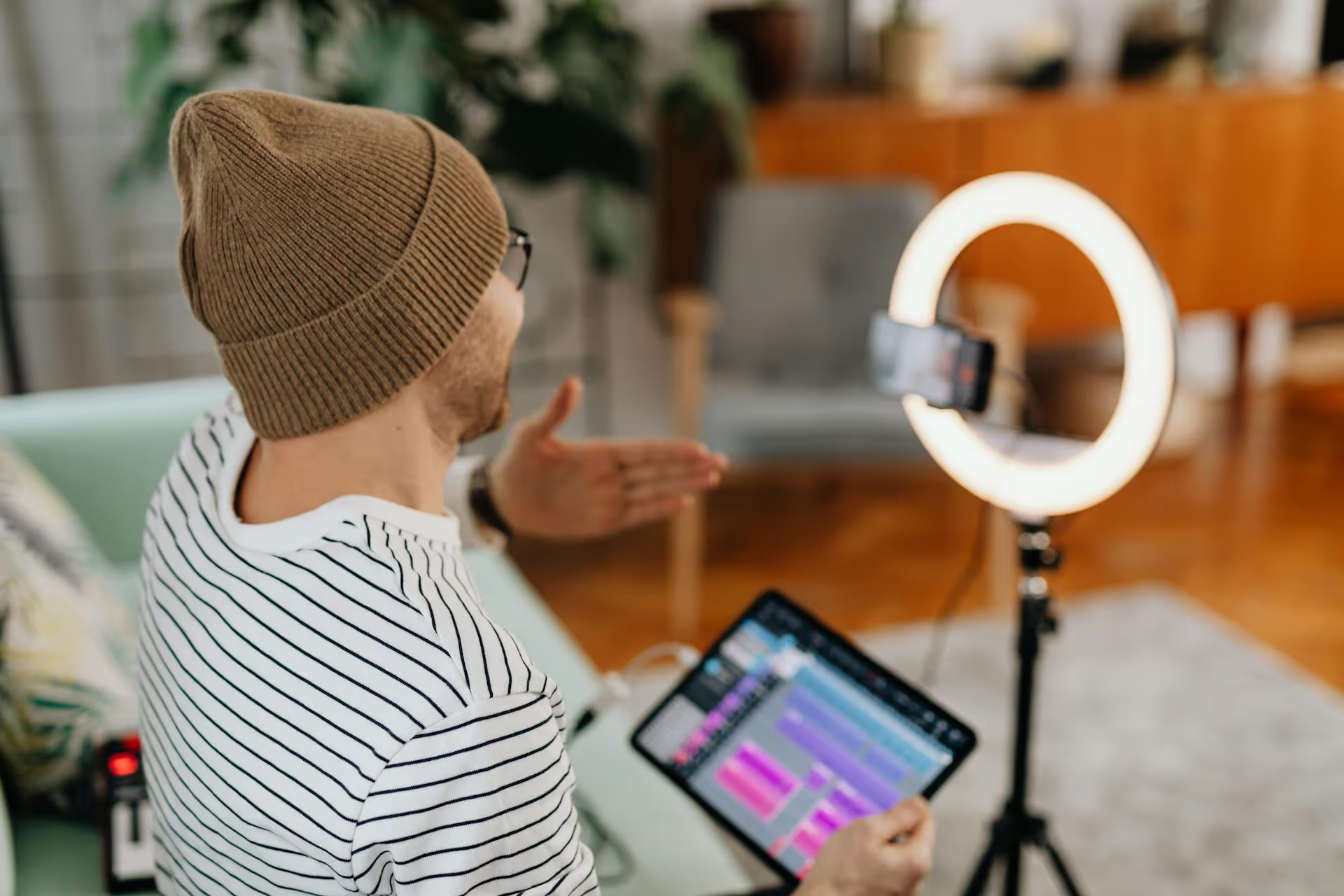How to Add Social Media Icons to an Email Signature
Enhance your email signature by adding social media icons. Discover step-by-step instructions to turn every email into a powerful marketing tool.

An influencer might have a million followers, but that number means nothing if their audience isn't paying attention. A massive follower count doesn't guarantee sales, brand loyalty, or even awareness. This guide cuts through the noise and shows you how to measure what truly matters: influencer engagement. We’ll show you the exact metrics to track, how to calculate engagement rates, and how to analyze the quality of audience interaction to see what's really driving results.
In influencer marketing, it's easy to get caught up in flashy numbers. A profile with 500k or 1 million followers feels like a guaranteed win. But follower count is a classic "vanity metric" - it looks good on the surface but offers very little insight into an influencer's actual impact. Think of it like a beautiful storefront with no one inside.
Here’s why you need to look deeper:
Instead of chasing follower counts, smart marketers focus on engagement. Engagement is the active measurement of how an audience interacts with content. It’s proof that people are not just seeing the content, but listening, reacting, and caring.
Effective measurement starts with tracking the right things. Engagement isn't a single number, it's a collection of user actions that tell a story about how well content resonates with an audience. Here are the core metrics you should be monitoring.
These are the foundational metrics available on almost every social media platform. Each one signals a different level of interest.
Different content formats have unique engagement signals that you need to track.
Ultimately, influencer marketing should tie back to business goals. These metrics connect a campaign directly to your bottom line.
Once you’ve gathered the metrics, you need to put them in context. The Engagement Rate (ER) is a simple but powerful percentage that tells you how much of an influencer’s audience is actively interacting with their content. There are a few ways to calculate it, each with its own pros and cons.
This is the most common and simplest method. It measures the rate of engagement relative to an influencer’s total follower count.
(Total Engagements ÷ Total Followers) x 100 = ER by Followers
Example: An influencer has 50,000 followers. Their post gets:
The calculation would be: (2,000 ÷ 50,000) x 100 = 4% Engagement Rate
This is often considered a more accurate measurement because it calculates engagement relative to the number of unique people who actually saw the post.
(Total engagements ÷ Post Reach) x 100 = ER by Reach
Example: The same post with 2,000 engagements reaches 25,000 unique people.
The calculation would be: (2,000 ÷ 25,000) x 100 = 8% Engagement Rate
Calculating rates is critical, but numbers alone don’t tell the whole story. The quality of the engagement is just as important as the quantity. A post with 100 thoughtful comments is far more valuable than a post with 1,000 comments that are all spammy emojis or contest entries.
Here’s how to analyze the quality of engagement:
Don't just count the comments - read them. Dive into the comment section and ask yourself:
Take a moment to look at the profiles of the people who are commenting. Does their public information align with your target customer persona? If you’re a US-based skincare brand for women over 30, but the comments are primarily from teenage boys in a different country, that influencer's audience is not aligned with your brand, no matter how high the engagement rate is.
There is no universal "good" engagement rate. It varies dramatically based on the platform, industry, and influencer size. Here are some general guidelines to give you context:
Instead of relying on a universal standard, benchmark an influencer against their own past performance. Review their last 10-15 posts. Is the engagement on their sponsored post consistent with their typical organic content? If it’s dramatically lower, the audience may have perceived it as inauthentic. If it’s higher, the collaboration was a great fit.
Measuring influencer engagement means looking past surface-level numbers like follower count and truly understanding how an audience connects with an influencer and their content. By combining quantitative metrics like engagement rate with a qualitative analysis of comments and community sentiment, you get a complete picture of an influencer's real impact.
Once you’ve identified where and how audiences are engaging with your brand, managing those conversations becomes the next actionable step. At Postbase, we designed our platform to make this process seamless. Our unified Engagement inbox lets you view and reply to comments and DMs from all of your platforms in one central place, helping you nurture the very community and brand loyalty you’ve worked so hard to build.
Enhance your email signature by adding social media icons. Discover step-by-step instructions to turn every email into a powerful marketing tool.
Learn how to add your Etsy link to Pinterest and drive traffic to your shop. Discover strategies to create converting pins and turn browsers into customers.
Grant access to your Facebook Business Manager securely. Follow our step-by-step guide to add users and assign permissions without sharing your password.
Record clear audio for Instagram Reels with this guide. Learn actionable steps to create professional-sounding audio, using just your phone or upgraded gear.
Add translations to Instagram posts and connect globally. Learn manual techniques and discover Instagram's automatic translation features in this guide.
Optimize your Facebook Business Page for growth and sales with strategic tweaks. Learn to engage your community, create captivating content, and refine strategies.
Wrestling with social media? It doesn’t have to be this hard. Plan your content, schedule posts, respond to comments, and analyze performance — all in one simple, easy-to-use tool.